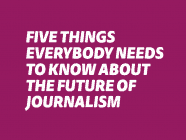Journalism often deals with violence and catastrophe. So journalists must continually make decisions on how to use images of corpses, conflict, and trauma.
A journalism diploma thesis by Simon Balzert at the Technische Universität Dortmund compared the use of violent imagery in German and Spanish national loans-cash.net . In the study, German newspapers the Frankfurter Allgemeine Zeitung, Süddeutsche Zeitung, Die Welt and taz were analyzed along with Spanish papers ABC, El Mundo, El País and La Razón.
The study looked at news stories written about 25 violent events that occured between March 2011 and May 2012 . The incidents included the Tōhoku tsunami in Japan, Gadhafi’s death and the attacks on the Syrian cities of Damascus and Hula.
Violent photos are defined as photos showing dead or injured people, severed parts of the human body or images depicting people about to die or be injured.
German newspapers printed far fewer violent photos than the Spanish newspapers. There were 27 violent images printed in 100 German newspaper editions. In 100 Spanish newspaper editions, 87 were printed. At least one violent photo could be found in 22 percent of the German papers and 49 percent of the Spanish papers.
There was significant variation between the newspapers. Frankfurter Allgemeine Zeitung and Süddeutsche Zeitung rarely publish violent images, while ABC, El País, El Mundo and La Razón publish many – often in a sensational way. The taz and Die Welt publish more violent photos than Frankfurter Allgemeine Zeitung and Süddeutsche Zeitung but manage to present them less sensationally than the Spanish papers.
After Gadhafi’s death neither Frankfurter Allgemeine Zeitung nor Süddeutsche Zeitung publish images of the deceased dictator. Spanish newspapers print his bloodied face on the front and inside pages. The taz and Die Welt publish smaller photos of Gadhafi’s corpse alongside other images of him.
Article translated from the original German Leichen auf Seite Eins?
Photo Credit: Gerd Altmann / pixelio.de
Tags: Front Page News, media, News, Technical University of Dortmund, violence in the media, violent images















































